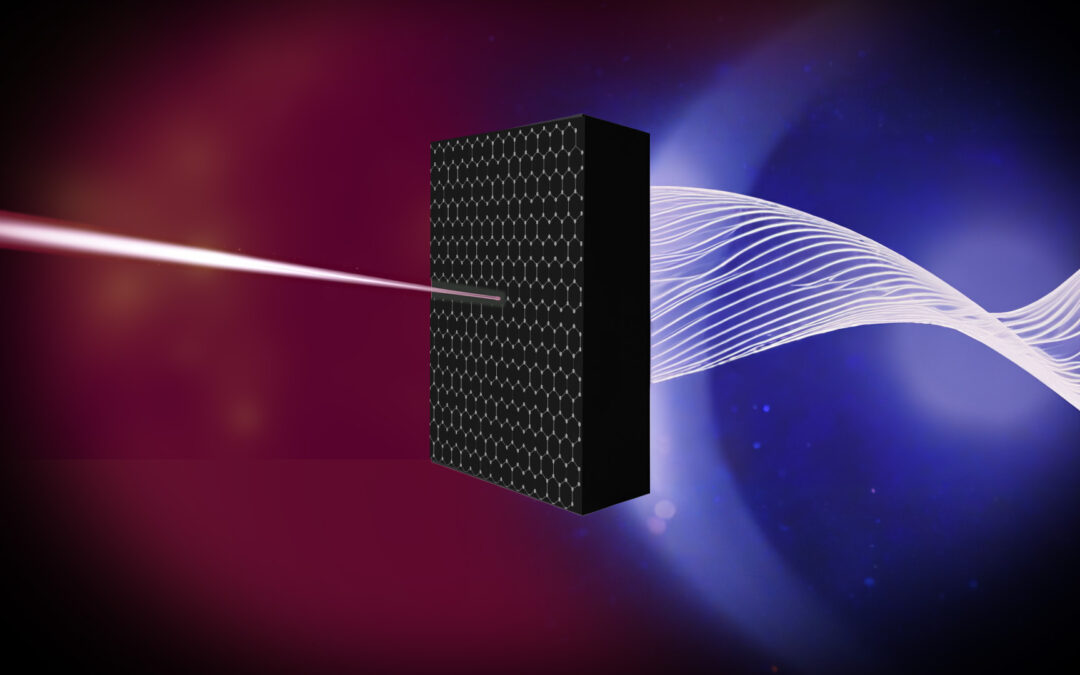From communication and entertainment to manufacturing and health care, lasers have revolutionized the way we interact with the world around us. They have become an integral part of our modern existence, pushing the boundaries of innovation as indispensable components of countless devices and industries.
Lasers produce narrow beams of light. When the laser’s light interacts with the surface of a material on a nanoscale, it emits a wave of light known as a plasmon, and the attributes of a given plasmon can signal information. In optic transmission, a laser pumps light at a component called a saturable absorber to generate an optical signal.
Yu Yao is an associate professor of electrical engineering in the School of Electrical, Computer and Energy Engineering, part of the Ira A. Fulton Schools of Engineering at Arizona State University. She and her research team at the ASU Center for Photonics Innovation designed a faster and more energy-efficient nanoscale laser component called the graphene-plasmonic hybrid metastructure saturable absorber, known as GPSMA.
GPSMA has potential applications across communication, information processing, spectroscopy and biomedical industries. The absorber can be used to enhance the speed, efficiency and overall performance to advance data transmission, information processing, biomedical sensing and imaging technologies.
Yao’s team has been incorporating an artificially engineered metal-graphene hybrid material in their work due to its beneficial traits in optical modulation and saturable absorption.
